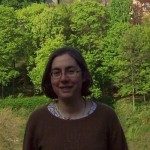Date
17
Sep 2018
Heure
11:00:00
25 Rue du Docteur Roux, Paris, France
Adresse
Bâtiment: Lwoff
Localisation
2018-09-17 11:00:00
2018-09-17 12:30:00
Europe/Paris
Cross-linking Mass Spectrometry constraint selection and Modeling for protein structure determination
There are different manners to assist computational generation of tridimensional protein models by providing additional structural data, and one specific kind of experiment that can be drawn in order to obtain this kind of […]
25 Rue du Docteur Roux, Paris, France
Thérèse Malliavin
therese.malliavin@pasteur.fr
Présentation
There are different manners to assist computational generation of tridimensional protein models by providing additional structural data, and one specific kind of experiment that can be drawn in order to obtain this kind of information is cross-linking mass spectrometry. This technique – initially developed to assess protein complexes – provides information on the distance of residues which are solvent accessible and thus linked depending on their accessibility, local reactivity, and pairwise distances along the protein surface. Applying this technique to the modeling of tertiary structures depends on overcoming the fact that it generates a high amount of data, a low portion of which truly represents native constraints, and therefore, adequate data selection becomes a challenge on such a problem. In the present work, we introduce BISCORE, a constraint score based on classical psychometrics performance indicators, which, over successive iteration rounds, allows for recovery of constraints correlated with selected reference models, incrementally introducing modeling biases which will drive the sampled space towards those models, providing an overall increase on modeling quality. The modeling protocol involves a new software for the evaluation of structural constraints in protein models (TopoLink) and a new force-field for constraint representation (XLFF). We show that, given a consistent model quality assessment method, recovered constraints will progress towards native constraints, and overall modeling will progress towards native structure. We were able to increase the number of native-similar models generated by more than 50-fold when compared to the unconstrained modeling, greatly surpassing the performance of previously employed selection methods, while also substantially increasing the quality of the best generated models. The methods are implemented for general use and available at http://m3g.iqm.unicamp.br/topolink. We acknowledge the grants from CNPq and FAPESP (2010/16947-9, 2013/08293-7) and the CCE&S for financing and computational resources.
Partenaires
Localisation
Bâtiment: Lwoff
Adresse: 25 Rue du Docteur Roux, Paris, France



